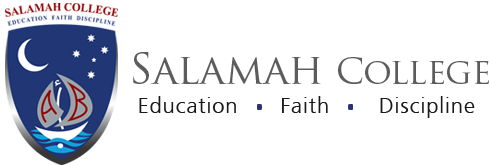In English, students learn to read, write, talk and listen. They learn about English language and literature, how language varies according to context and how to communicate to a range of audiences for different purposes. They learn to read for information and for pleasure. They learn about poetry, novels and plays. They gain a sound grasp of language structures, punctuation, spelling and grammar.
Literacy Learning Centres
At Salamah College, all classes engage in ‘Literacy Learning Centres’. Learning Centres are where students work collaboratively, participating in hands-on, student-centred Literacy tasks and activities without direct teacher instruction. Students work at various ‘stations’ and rotate between. Types of stations can include comprehension, spelling, sentence construction, sight words, reading and writing. Learning Centres individualise classroom instruction by offering activities that cater to specific student needs or interests. The activities in a learning center reiterate concepts learnt previously, allow students to build on skills that need practice or allow for students to explore an area of interest.
‘Reading to Learn’
At Salamah College, our teachers are trained in the Literacy program ‘Reading to Learn’. Reading to Learn is integrated throughout all Literacy programs including Science and HSIE. It is designed to enable all learners at all levels of education to read and write successfully. The Reading to Learn approach involves a sequence of activities that focus on the structure, language and meaning of high quality, fiction and non-fiction texts that are challenging, age appropriate and used within the classroom. Reading to Learn involves patterns of teacher-student interaction specifically designed to generate high level engagement by giving students the cues required to understand the sequence of meanings in a text, and then to attend to the literate language features.
Benefits of Reading to Learn:
Inclusive of students from diverse cultural and linguistic backgrounds
Linked to curriculum and assessment practices
Flexible and adaptable to different models of delivery
Supportive of different levels of literacy development, including reading, writing, spelling, punctuation and grammar
Capable of extending the learning of more able students as well as students underachieving in literacy
Provides a common literacy pedagogy and builds partnerships between middle years teachers in primary and secondary schools.
